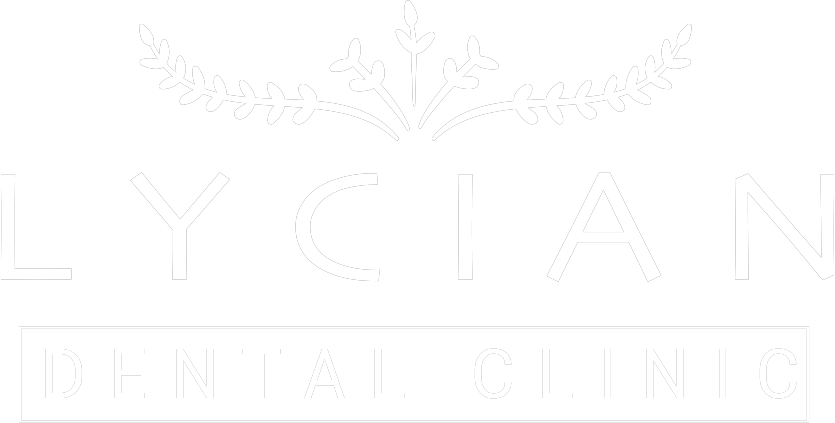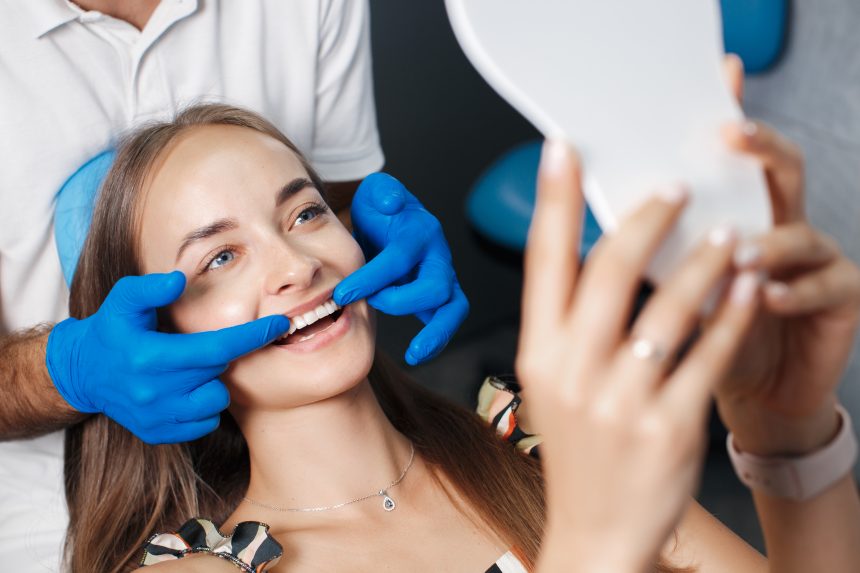Dental extractions techniques, the removal of a tooth from its socket in the bone, are often necessary for various reasons, including severe decay, infection, or overcrowding. While the thought of tooth extraction might cause anxiety, modern dental practices have evolved significantly, making the procedure relatively straightforward and less daunting. Lycian Dental Clinic in Turkey is renowned for its advanced and patient-centric approach to dental extractions. This article explores the various dental extraction techniques and procedures and how Lycian Dental Clinic ensures a safe and comfortable experience for its patients.
Understanding Dental Extractions
Indications for Dental Extractions
Severe Tooth Decay: When tooth decay extends to the pulp and cannot be treated with a root canal.
Gum Disease: Advanced periodontal disease can weaken the tooth’s support, necessitating extraction.
Impacted Teeth: Commonly wisdom teeth that are trapped in the jawbone or gums.
Overcrowding: To create space for proper alignment in orthodontic treatments.
Infection or Abscess: Persistent infections that do not respond to other treatments.
Fractured Teeth: Severe fractures that cannot be restored.
Techniques and Procedures in Dental Extractions
Dental extractions can be broadly categorized into two types: simple extractions and surgical extractions. The choice of technique depends on the condition of the tooth and surrounding structures.
Simple Extractions
Simple extractions are performed on visible teeth in the mouth, usually under local anesthesia. The process involves:
Anesthesia: Local anesthesia is administered to numb the area around the tooth.
Loosening the Tooth: The dentist uses an elevator, a dental instrument, to loosen the tooth.
Extraction: Forceps are then used to remove the tooth from the socket.
Surgical Extractions
Surgical extractions are more complex and are required when the tooth is not easily accessible. This includes impacted teeth, broken teeth, or teeth that have not fully erupted. The procedure involves:
Anesthesia: Local anesthesia, and sometimes sedation or general anesthesia, is administered.
Incision: A small incision is made in the gum to access the tooth.
Bone Removal: Sometimes a small amount of bone around the tooth needs to be removed.
Tooth Sectioning: The tooth may be divided into sections for easier removal.
Extraction: The sections of the tooth are removed.
Stitches: The incision is closed with stitches.
Advanced Techniques at Lycian Dental Clinic
Lycian Dental Clinic leverages state-of-the-art technologies and advanced techniques to ensure efficient, safe, and pain-free dental extractions.
Digital Imaging and Radiography
Before proceeding with any extraction, precise imaging is crucial for a thorough assessment. Lycian Dental Clinic utilizes advanced digital imaging and radiography:
- Intraoral Cameras: Provide detailed images of the teeth and gums.
- Digital X-Rays: Offer high-resolution images with less radiation exposure compared to traditional X-rays.
- Cone Beam Computed Tomography (CBCT): 3D imaging that gives a comprehensive view of the jawbone and surrounding structures.
Minimally Invasive Techniques
Minimally invasive techniques reduce trauma to the surrounding tissues and promote faster healing. These techniques include:
- Piezoelectric Surgery: Uses ultrasonic vibrations to cut bone with precision, minimizing damage to soft tissues.
- Laser-Assisted Extractions: Dental lasers are used to make precise incisions and remove tissue, reducing bleeding and swelling.
Sedation Dentistry
To alleviate anxiety and ensure patient comfort, Lycian Dental Clinic offers various sedation options:
- Nitrous Oxide (Laughing Gas): Provides mild sedation and relaxation.
- Oral Sedation: Involves taking a sedative pill before the procedure.
- Intravenous (IV) Sedation: Administered through a vein for deeper sedation.
- General Anesthesia: Used for complex extractions or highly anxious patients.
Step-by-Step Extraction Procedure at Lycian Dental Clinic
- Initial Consultation and Assessment
The process begins with a comprehensive consultation to understand the patient’s dental history, current issues, and any medical conditions that might affect the procedure.
- Examination: The dentist conducts a thorough examination of the mouth, including the problematic tooth and surrounding structures.
- Imaging: Digital X-rays or CBCT scans are taken to assess the tooth’s position and the condition of the jawbone.
- Pre-Procedure Preparation
Based on the assessment, a tailored treatment plan is created. Patients are given detailed instructions on how to prepare for the extraction.
- Medical Evaluation: Review of the patient’s medical history and any medications being taken.
- Sedation Options: Discussion and selection of the appropriate sedation method.
- Pre-Procedure Instructions: Patients are advised on dietary restrictions and other preparatory steps.
- Administration of Anesthesia
Ensuring patient comfort is a priority. The selected anesthesia method is administered to numb the area and alleviate anxiety.
- Tooth Extraction
Depending on the complexity, either a simple or surgical extraction is performed.
- Simple Extraction: The dentist loosens and removes the tooth using elevators and forceps.
- Surgical Extraction: An incision is made, and the tooth is sectioned and removed.
- Post-Extraction Care
After the tooth is removed, proper post-extraction care is crucial for healing.
- Gauze Placement: Gauze is placed over the extraction site to control bleeding.
- Stitches: If necessary, stitches are used to close the incision.
- Post-Operative Instructions: Patients receive detailed care instructions, including pain management, diet, and oral hygiene practices.
- Follow-Up
A follow-up appointment is scheduled to monitor healing and address any complications.
Post-Extraction Care and Recovery
Proper care after an extraction is essential to ensure a smooth recovery and prevent complications such as dry socket or infection. Lycian Dental Clinic provides comprehensive post-operative care instructions:
- Managing Bleeding
- Gauze Pressure: Patients are advised to bite down gently on a gauze pad for 30-45 minutes to control bleeding.
- Avoid Rinsing or Spitting: To prevent dislodging the clot, patients should avoid rinsing or spitting for 24 hours.
- Pain Management
- Medications: Over-the-counter pain relievers or prescribed medications can be used to manage discomfort.
- Cold Compress: Applying a cold compress to the outside of the cheek can help reduce swelling and pain.
- Diet and Hydration
- Soft Foods: Patients should consume soft foods and avoid chewing on the extraction site.
- Hydration: Staying hydrated is important, but straws should be avoided to prevent dislodging the clot.
- Oral Hygiene
- Gentle Rinsing: After 24 hours, gentle rinsing with a saline solution can aid healing.
- Avoiding the Extraction Site: Patients should brush and floss but avoid the extraction site to prevent irritation.
- Activity Restrictions
- Rest: Patients are advised to rest and avoid strenuous activities for at least 24 hours.
- Head Elevation: Keeping the head elevated can help reduce swelling and promote healing.
Complications and Management
While complications are rare, Lycian Dental Clinic is equipped to handle any issues that may arise post-extraction:
- Dry Socket: A condition where the blood clot dislodges, exposing the bone. Symptoms include severe pain and foul odor. Treatment involves cleaning the socket and placing a medicated dressing.
- Infection: Signs include fever, pus, and swelling. Antibiotics may be prescribed, and the area may need to be cleaned.
- Prolonged Bleeding: If bleeding persists, the dentist may place additional gauze or use other hemostatic agents to control it.
- Nerve Injury: Though rare, nerve injury can occur, especially in lower wisdom teeth extractions. Symptoms include numbness or tingling. Most nerve injuries are temporary and resolve over time.
Patient-Centric Approach at Lycian Dental Clinic
Lycian Dental Clinic prides itself on a patient-centric approach, ensuring that each patient receives personalized care and attention throughout their dental extraction journey.
Comprehensive Consultations
From the initial consultation, patients are involved in the decision-making process. The clinic provides detailed explanations and addresses all concerns, ensuring patients are well-informed and comfortable with the planned procedure.
State-of-the-Art Facilities
Lycian Dental Clinic is equipped with the latest dental technologies, ensuring high precision and safety during extractions. Their modern facilities provide a comfortable and hygienic environment for all dental procedures.
Skilled and Experienced Team
The dental professionals at Lycian Dental Clinic are highly trained and experienced in performing both simple and complex extractions. Continuous education and training ensure that they are up-to-date with the latest techniques and best practices in dental care.
Holistic Care and Follow-Up
Post-extraction care is as important as the procedure itself. Lycian Dental Clinic provides comprehensive follow-up services to monitor healing and address any concerns, ensuring a smooth and quick recovery for patients.
Conclusion
Dental extractions, while sometimes necessary, need not be a source of anxiety or discomfort. With modern techniques and technologies, coupled with a patient-centric approach, Lycian Dental Clinic in Turkey ensures that dental extractions are performed with utmost precision and care. From initial consultation to post-procedure follow-up, their comprehensive and advanced approach guarantees a safe, comfortable, and positive experience for all patients. By staying at the forefront of dental innovations.

